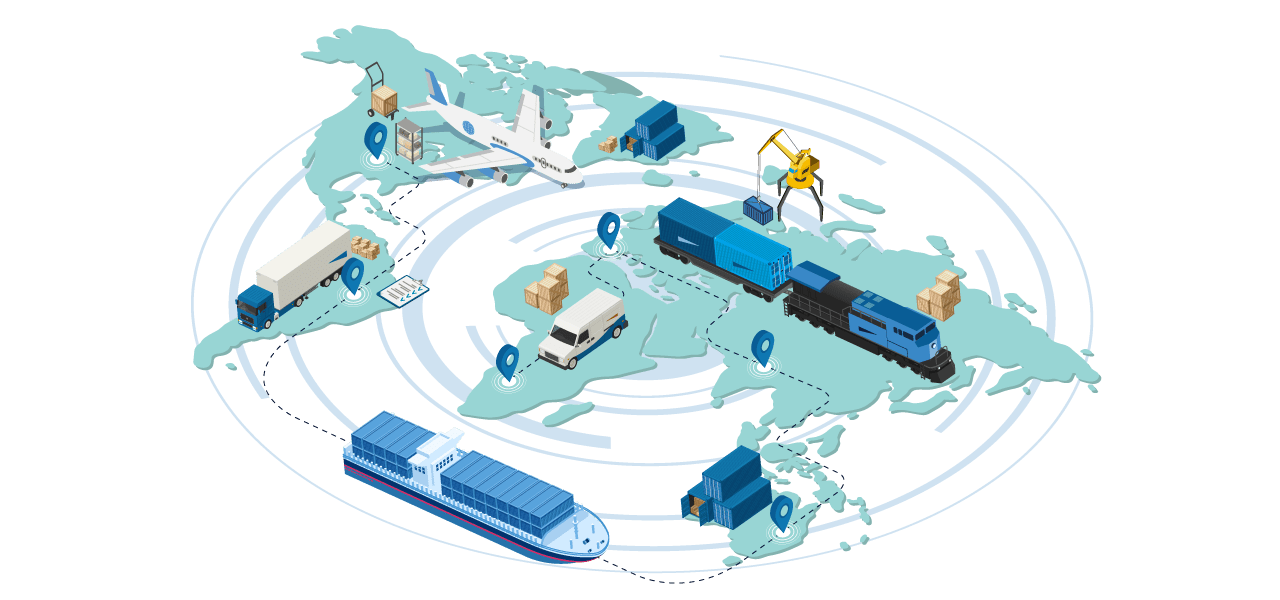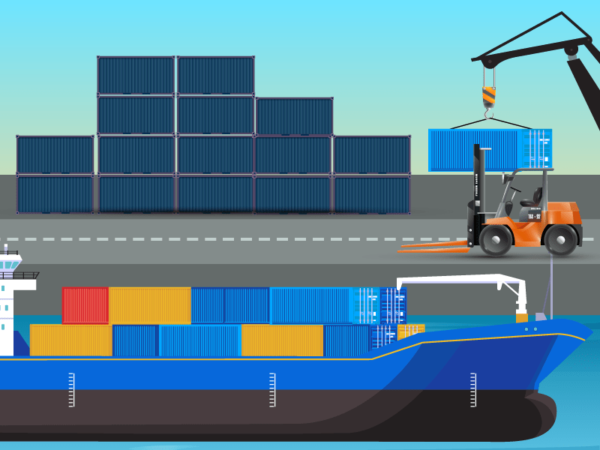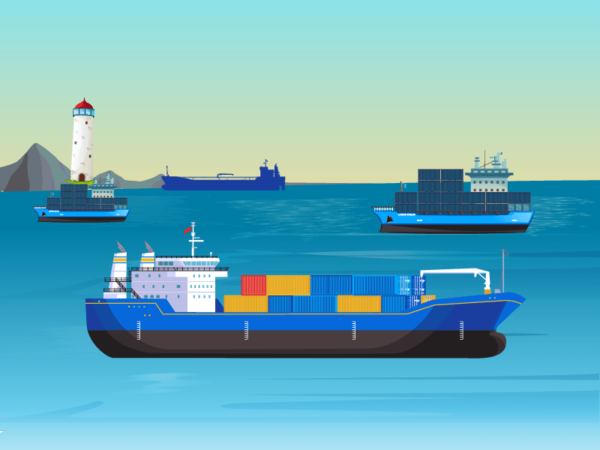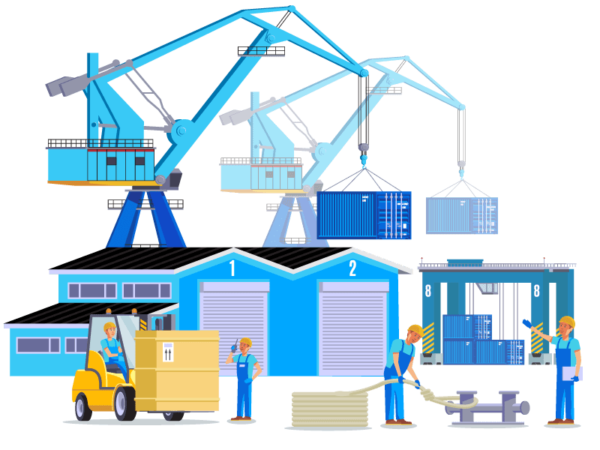 In the present day and age, the world is interconnected than ever before. The domineering technology has bridged the gaps that once existed, and due to which we get to experience the global effects of the occurrences that happen at one or some parts of the world.
In the present day and age, the world is interconnected than ever before. The domineering technology has bridged the gaps that once existed, and due to which we get to experience the global effects of the occurrences that happen at one or some parts of the world.
As the series of events cause global impacts and consequences, the whole cycle of operations gets affected in all the regions. Speaking of which, Global Supply Chain is a great example.
Global supply chains (GSCs) are huge networks that span thousands of miles to supply goods and services across borders. Fixating upon their gigantic significance, it must be noted that all businesses are interconnected by the widespread, complex networks of GSCs. Any unprecedented disruption in any component causes sharp variations and different outcomes in every other section of the global chain. This bullwhip effect causes the imbalance in the whole distribution channel for all types of businesses and companies, from micro, medium to small.
In this blog, we’ll talk about the series of impacts on the Global Supply Chains in the backdrop of COVID-19, Suez Canal Blockage, and other recent occurrences around the world. Keep reading!
- Canal Suez & Ever Given

The 400 – meter Ever Given was on its way to the Dutch Port of the Netherlands when it got stuck into a Suez Canal with 18,300 containers on board in number. The mammoth cargo caused more than 400 vessels left stranded on either side of the canal. Carrying everything from crude oil to cattle, semiconductors, orders from ecommerce sites, and many other goods, they stood ceasing their journeys and waiting for the giant cargo to move out of the only way.
The whole shutdown raised some serious concerns about rising costs for consumers, supply shortages, putting the global shipping industry under additional strain. The Suez Canal incident held up a huge amount of around $9 billion in a Global Trade a day and halting the supply chains which were already overburdened by the pandemic surge. This week-long unpredictable blockage gave rise to the novel surge in container spot freight rates, creating a huge impact on the global trade as all the goods are shipped through them.
The Canal Logjam not only costed billions but also resulted in delaying all the shipments by the span of weeks; that largely included many ecommerce items from China. In addition, shipping costs increased by many folds, many perishable items were lost and there were delays everywhere. Many businesses weren’t able to bear the hike in shipping rates and transferred it to their customers. Prices for crude oil, coffee, toilet paper, and other goods were increased. Shipments of Europe-bound refined petroleum products – gasoline and jet fuel – were delayed, and there was a shortage of semiconductors and other goods too.

This maritime conveyor belt is what moved goods around the world, and we all took it for granted until one day we saw mammoth cargo was stuck in the way and caused a traffic jam. Albeit the Suez Canal is open and a freeway again, but the occurrence of the weeklong maritime jam would have long-term impacts on so many sectors. Europe is still trying to recover from the impact since the incident occurred weeks ago. Not only did it raise the prices of the merch by 10 to 40% on top of increases, but customers experienced series of complexities due to COVID 19 implications as well.
- Covid Impact
Pandemic surge across continents resulted in a series of disruptions to multiple Global Supply Chains. Lockdowns and border closures restricted the movement of goods, and GSCs got affected by the major instabilities in manufacturing, transport, logistics, and fluctuating shifts in demand and there’s more on the list. Moreover, the supply chains of pharmaceuticals, food, automotive, electronics, and more were affected in the whole pandemic scenario.
1. The shutdown of Commercial Aviation

One of the greatest blockages that GSCs experienced was due to the shutdown of commercial aviation in a number of regions and countries. The halt limited the available air cargo capacities delaying the movement of goods and many vital supplies, that included medical equipment and medicine to curb the surge around the world. It must be noted that around 50 to 60% of all air freight normally travels as belly cargo on passenger aircraft. According to the US Department of Transportation Security Administration, all passenger flights fell by about 95% compared to a year ago.
2. Sealed Borders and Trade Restrictions

Around the world, all logistics operations were halted by the stringent trade restrictions and the sealing of borders. Due to the lockdown situation in many countries, interregional trade is also disrupted on a large scale. Currently, there are many export restrictions imposed by some countries such as USA, Germany, France, India, which is greatly causing delays in the transaction along with restricting some very important products from leaving and entering different countries.
3. The cost of raw material is up
According to the previous situation, earlier declines in demand for raw materials during the early months of the pandemic caused many suppliers to reduce the capacity. And this is now resulting in higher prices and a limited supply from the industries, such as steel, rubber, etc. Many manufacturers and other automotive suppliers are facing complications in procuring sufficient raw material and paying higher prices to meet the customers’ demands. Another alarming has surfaced indicating the expected covid drug shortages as the raw material price has surged up to 200%.
4. Ocean Transportation & Logistics has become expensive to afford

Demand for container shipping has incredibly grown in the pandemic surge. According to the recent analysis and the documentation, the freight rates have been higher on the trade routes to developing regions. At the moment, freight rates to South America and Western Africa are comparatively higher than to any other region specifically. Series of constraints and the hike in prices are impacting the key exporters like China, Brazil, India, Mexico as well as the importers like European Union.
16 months and still world is under the spell of COVID. Some countries stood strong in a battle against COVID and managed to control the rampant situation. While US and Europe have controlled the case counts, the surge persists in the other countries still damaging the global trade.
- Inside the US: The cost of the workforce is high

US Labor market is experiencing a huge shift with the pandemic surge in the country. The whole logistics chain is facing a crisis of lack of workers in all the supply chain sectors. Quarantine restrictions, an outbreak of new cases, temporary shutdown, and other reasons are responsible for the unavailability the white and blue-collar laborers throughout all the supply chain stages. Moreover, with relief cheques dropping regularly, there’s a drop in the number of people searching for jobs and it’s been extremely hard to find workers, especially for small businesses.
Countless businesses are suffering because of a shortage of staff, which has resulted in increased cost, poor customer satisfaction, and delays in production at a great level. In addition, the cost involved in hiring new employees can not be underestimated. It takes a lot, such as advertising the open position, reviewing resumes, interviewing sessions, and providing training to the new workers. With the high cost of hiring and retaining a workforce, we as consumers are likely to end up paying huge prices for all the goods and services we buy.
This current situation has raised major concerns and exposed vulnerabilities in the global system of supply chains. It is high time to acknowledge the new realities of the era and adopt a new vision that can help us handle unforeseen global risks. Specifically, one that allows leveraging our capabilities while reducing the risks and improving the resilience of our trade system that can occur in the near future.
We bring you the needed insight and updates to grow your e-commerce business. Stay up to date on all things with eCommerceMD!

